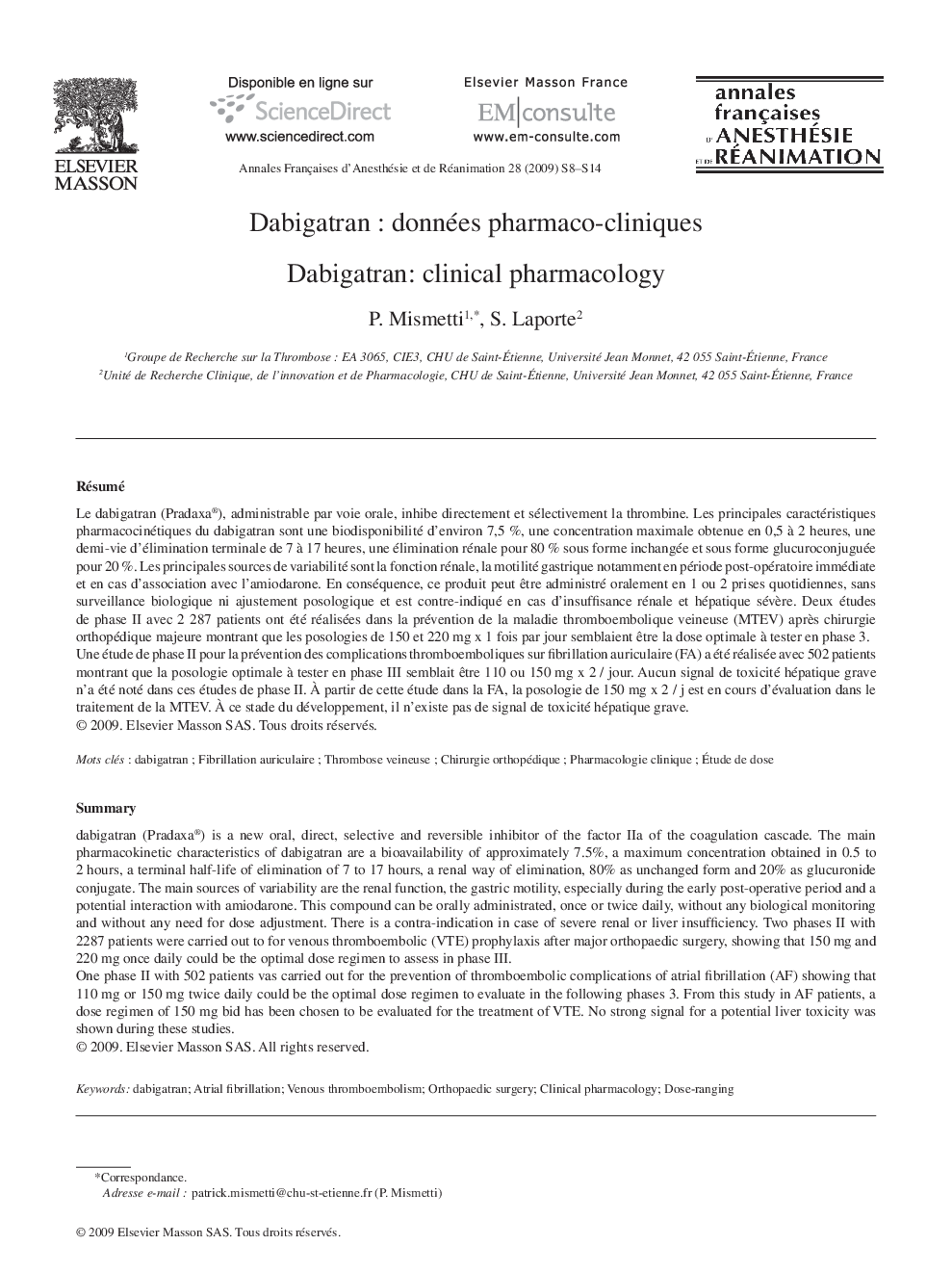| Article ID | Journal | Published Year | Pages | File Type |
|---|---|---|---|---|
| 2746734 | Annales Françaises d'Anesthésie et de Réanimation | 2009 | 7 Pages |
RésuméLe dabigatran (Pradaxa®), administrable par voie orale, inhibe directement et sélectivement la thrombine. Les principales caractéristiques pharmacocinétiques du dabigatran sont une biodisponibilité d’environ 7,5 %, une concentration maximale obtenue en 0,5 à 2 heures, une demi-vie d’élimination terminale de 7 à 17 heures, une élimination rénale pour 80 % sous forme inchangée et sous forme glucuroconjuguée pour 20 %. Les principales sources de variabilité sont la fonction rénale, la motilité gastrique notamment en période post-opératoire immédiate et en cas d’association avec l’amiodarone. En conséquence, ce produit peut être administré oralement en 1 ou 2 prises quotidiennes, sans surveillance biologique ni ajustement posologique et est contre-indiqué en cas d’insuffisance rénale et hépatique sévère. Deux études de phase II avec 2 287 patients ont été réalisées dans la prévention de la maladie thromboembolique veineuse (MTEV) après chirurgie orthopédique majeure montrant que les posologies de 150 et 220 mg × 1 fois par jour semblaient être la dose optimale à tester en phase 3.Une étude de phase II pour la prévention des complications thromboemboliques sur fibrillation auriculaire (FA) a été réalisée avec 502 patients montrant que la posologie optimale à tester en phase II semblait être 110 ou 150 mg x 2 / jour. Aucun signal de toxicité hépatique grave n’a été noté dans ces études de phase II. à partir de cette étude dans la FA, la posologie de 150 mg × 2 / j est en cours d’évaluation dans le traitement de la MTEV. à ce stade du développement, il n’existe pas de signal de toxicité hépatique grave.
SummaryDabigatran (Pradaxa®) is a new oral, direct, selective and reversible inhibitor of the factor IIa of the coagulation cascade. The main pharmacokinetic characteristics of dabigatran are a bioavailability of approximately 7.5%, a maximum concentration obtained in 0.5 to 2 hours, a terminal half-life of elimination of 7 to 17 hours, a renal way of elimination, 80% as unchanged form and 20% as glucuronide conjugate. The main sources of variability are the renal function, the gastric motility, especially during the early post-operative period and a potential interaction with amiodarone. This compound can be orally administrated, once or twice daily, without any biological monitoring and without any need for dose adjustment. There is a contra-indication in case of severe renal or liver insufficiency. Two phases II with 2287 patients were carried out to for venous thromboembolic (VTE) prophylaxis after major orthopaedic surgery, showing that 150 mg and 220 mg once daily could be the optimal dose regimen to assess in phase III.One phase II with 502 patients vas carried out for the prevention of thromboembolic complications of atrial fibrillation (AF) showing that 110 mg or 150 mg twice daily could be the optimal dose regimen to evaluate in the following phases 3. From this study in AF patients, a dose regimen of 150 mg bid has been chosen to be evaluated for the treatment of VTE. No strong signal for a potential liver toxicity was shown during these studies.
